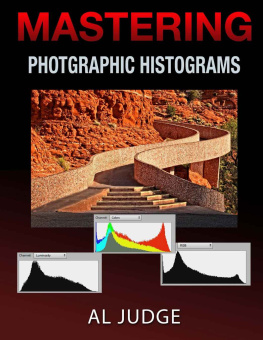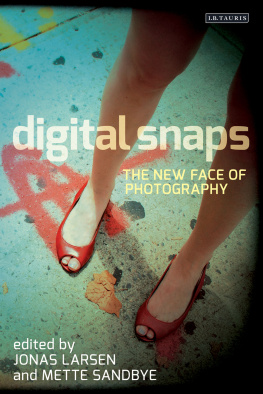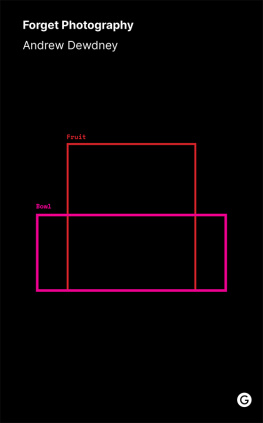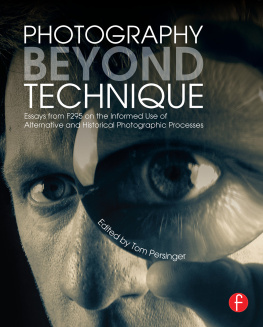Guide
Photography After Capitalism
Libraries gave us power,
Then work came and made us free
What price now, for a shallow piece of dignity?
Manic Street Preachers, A Design for Life, 1996
Photography After Capitalism
Ben Burbridge

Copyright 2020 Goldsmiths Press
First published in 2020 by Goldsmiths Press
Goldsmiths, University of London, New Cross
London SE14 6NW
Printed and bound by Versa Press
Distribution by the MIT Press
Cambridge, Massachusetts, and London, England
Copyright 2020 Ben Burbridge
The right of Ben Burbridge to be identified as the author of this work has been asserted by him in accordance with sections 77 and 78 in the Copyright, Designs and Patents Act 1988.
Every effort has been made to trace copyright holders and to obtain their permission for the use of copyright material. The publisher apologises for any errors or omissions and would be grateful if notified of any corrections that should be incorporated in future reprints or editions of this book.
A Design for Life Words and Music by James Bradfield, Nicholas Jones, Sean Moore 1996, Reproduced by permission of Sony/ATV Music Publishing, London W1T 3LP
All Rights Reserved. No part of this publication may be reproduced, distributed or transmitted in any form or by any means whatsoever without prior written permission of the publisher, except in the case of brief quotations in critical articles and review and certain non-commercial uses permitted by copyright law.
A CIP record for this book is available from the British Library
ISBN 978-1-912685-99-8 (hbk)
ISBN 978-1-1906897-512(ebk)
www.gold.ac.uk/goldsmiths-press

d_r0
Contents
I would like to thank the following friends, colleagues and family for their advice, support and guidance: Annebella Pollen, Catherine Grant, Charlotte Cotton, Liam Devlin, Ronnie Close, David Mellor, David Chandler, Anthony Luvera, Rozsa Farkas, Mishka Henner, Julian Germain, Andrew Norman-Wilson, Marvin Heiferman, Julian Stallabrass, Oliver Whitehead, Gordon MacDonald, Claire Langhamer, Paige Thompson, Tania Kant, Jack Pay, Alisa Lebow, Michel OConnell, Mel Friend, Cecile Chevalier, Ben Highmore, Lindsay Smith, Maurice Howard, Michelle OMalley, Caroline Sargentson, Ryann Donnelly, Meaghan Clarke, Liz James, Geoff Quilley, Wendy Hitchmough, Ruby Rees Sheridan, Harry Salisbury, Alice Compton, Chris Haffenden, Gabrielle McCartan, Graham and Karen Pay, Erin and Molly Burbridge, Shoair Mavlian, Nicola Jeffreys and everyone at Photoworks, Tim Clark, Mariama Attah, Elisa Medde and everyone at FOAM, Brett Rogers, Joseph Kendra, Janice McLaren and colleagues at The Photographers Gallery, staff at the International Centre for Photography, New York, and to Ph: The Photography Research Network.
Thank you to the organisers, audiences and my fellow speakers at the various conferences, symposia and events that have provided opportunities to present and receive feedback on my workPhotography and Lived Experience, University of Huddersfield, 2019; Eyeless Site and Machine Seeing, the Whitworth, Manchester, 2019; Post-Capitalist Photography Now!, The Photographers Gallery, London, 2018; Researching, Writing and Exhibiting Photography, University of Westminster, London, 2016; Photography and Politics, and the Politics of Photography, International Conference for Photography Theory, Nicosia, 2014; and Everyday and Everywhere: Vernacular Photography Today, Tate Modern, London, 2013along with those involved with invited talks and lectures at the University of Wales, Cardiff; University of Plymouth; Fabrica Gallery, Brighton; Newhaven/Dieppe Festival; Brighton Photo Biennial; Brighton Photo Fringe; and the University of Westminster.
Parts of informed essays written for issues 49 and 54 of FOAM magazine.
I am grateful to the University of Sussex for financial assistance towards the costs of image licensing. I would also like to express sincere thanks to staff at the British Library, Sussex University Library, St Peters House Library and, particularly, Eastbourne Public Library and Queenswood Library, Eastbourne for providing such welcoming workspaces. Many thanks to the artists, photographers and galleries that have provided me with images to use as illustrations, and to those who took the time to respond to email requests, including Bruce MacLean, Marian Goodman and the Renaissance Society. This does not include Terry Richardson, however, whohaving requested to read a copy of my textdeclined permission to reproduce a spread from his book Terryworld (a blessing in disguise maybe?). A big thanks to Lizzie Reed and Michael Hall for help with copyright clearance for the Manic Street Preachers lyrics, and to Nick James for his excellent work producing the index.
I owe a particular thanks to all the University of Sussex students whom Ive had the great joy of working with during the past ten years. Those experiences have shaped every part of this book in too many ways to list here and have made my life much brighter.
An extra special thank you to Sarah Kember, Ellen Parneveles and their excellent colleagues at Goldsmiths Press for their tireless work producing the book; to Geoffrey Batchen, Andrew Dewdney and Daniel Palmer for reviewing the manuscript and offering insightful feedback; to Katrina Sluis for her inspiration and input; to Sarah James, Anna McSweeney and Francesco Ventrella for responding enthusiastically to drafts, offering valuable feedback and for being lovely people; to Joanna Pawlik and Flora Dennis for their collegiality and conversation; and to my dad, Nick Burbridge, for attentively reading yet another text, and for everything else. Felix, Luca, Leon, you are wondrous and I love you. A huge thank you, finally, to Charlotte Pay for the support, care, love, laughter and asking the difficult questions.
Google Street View is a good example of what Joanna Zylinska calls non-human photography. Pictures are produced by spherical arrangements of between nine and fifteen cameras, mounted on cars, trikes and backpacks, and programmed to photograph automatically approximately every five metres travelled. The digital photographs are later stitched together as part of a tapestry of billions, creating a simulacrum of the physical world as viewed from just above eye level. Like CCTV, drone media, medical body scans, and satellite imagery, Street View sees photography become increasingly decoupled from human agency and human vision. Most of the streets in North and South America, Europe and Australasia are now available to view, with progress well underway in Asia and Africa. Google has also extended the range of sites it photographs, to include monuments, tribal villages, areas of outstanding natural beauty, the interiors of shops and cafes, and the inside of art galleries and museums.
Street View is also a good example of what artist Hito Steyerl calls bubble vision. Like virtual reality and 360 video, Street View users can look up, down and around, as though positioned in the interior of a sphere. But, unlike the viewers of conventional photographswho understand themselves to occupy a space behind the camera and thus outside the area of the landscape depictedbubble vision situates us within the environments represented. Navigating 360-image worlds is a peculiarly disembodied experience. Because heads, hands, feet are all invisible to users, bubble vision is profoundly paradoxical. We are simultaneously present as a seeing entity; entirely absent as an embodied one. Steyerl believes immersive image environments to be populated by body-shaped holes.










